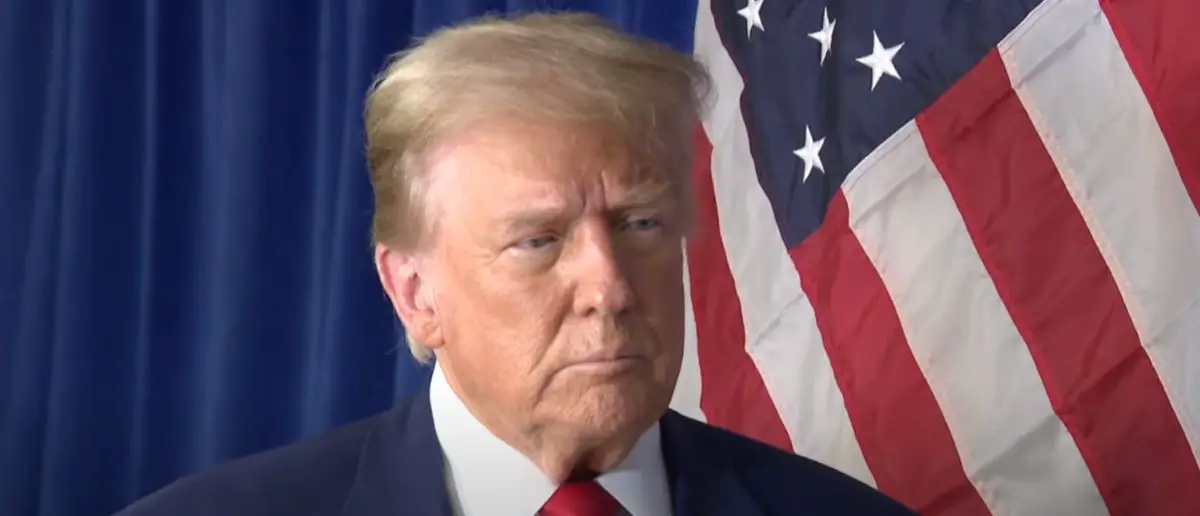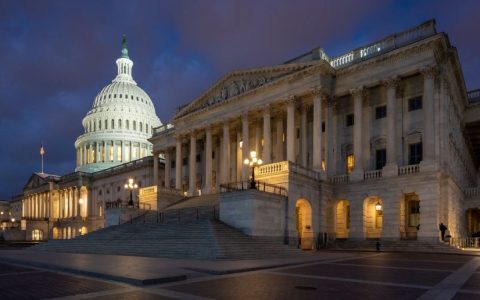
President Trump doesn’t care what his critics say. He’s powering forward with his America First agenda.
And now President Trump’s secret plan is taking shape that will cause a total Democrat meltdown.
President Trump Eyes Nuclear Energy To Usher In “Energy Renaissance”
President Donald Trump’s return to the White House has sparked renewed hope for America’s energy independence, with a particular focus on revitalizing the nuclear energy sector. His administration has signaled a strong commitment to promoting domestic nuclear power production, a move that could reshape the nation’s energy landscape. However, industry experts caution that significant challenges must be addressed before nuclear energy can take center stage in powering American homes and businesses.
On his first day back in office, Trump signed an executive order titled “Unleashing American Energy.” This directive aims to boost domestic fossil fuel production, which remains the backbone of U.S. energy, while also easing what the administration calls “undue burdens” on the nuclear energy sector. The order sends a clear message: the Trump administration is serious about fostering innovation and growth in nuclear power, an industry long hampered by bureaucratic red tape and public misconceptions.
Despite this ambitious vision, experts warn that the path to a nuclear-powered future is fraught with obstacles. “In this country, we’ve made it so difficult that it’s almost impossible to build a nuclear power plant,” said JD Foster, a former chief economist at the Office of Management and Budget who frequently participated in discussions on nuclear regulatory policy. Foster pointed to the sluggish pace of the Nuclear Regulatory Commission (NRC), which he described as “one of the slowest moving entities in the universe when it comes to assessing new technologies and nuclear power.”
The challenges facing the nuclear industry are multifaceted. A cumbersome permitting process, a shortage of skilled workers, nuclear waste management issues, stringent federal regulations, and lingering public fears about radiation all stand in the way of progress. These hurdles have persisted for decades, even as previous administrations, including those of Joe Biden and Barack Obama, pushed for nuclear expansion due to its reliability and efficiency.
Biden, for instance, signed the bipartisan ADVANCE Act into law in June 2024, aiming to reduce nuclear licensing costs, repurpose old industrial sites for reactors, and bolster NRC resources. Yet, the reality remains stark: nearly all of America’s nuclear power comes from reactors built between 1967 and 1990, according to the World Nuclear Association. This stagnation points to the urgency of the Trump administration’s renewed focus on nuclear energy.
Trump’s track record during his first term demonstrated consistent support for nuclear development, and his second term appears poised to build on that foundation. Less than a month after taking office, he established the National Energy Dominance Council, tasking its advisors with exploring ways to bring small modular reactors (SMRs) online. These compact reactors, capable of powering 300,000 homes continuously, represent a promising avenue for expanding nuclear capacity.
The administration’s commitment is further evidenced by the leadership of Department of Energy (DOE) Secretary Chris Wright, who has made nuclear energy a cornerstone of his agenda. “The long-awaited American nuclear renaissance must launch during President Trump’s administration,” Wright declared in his first secretarial order on February 5. “As global energy demand continues to grow, America must lead the commercialization of affordable and abundant nuclear energy. As such, the Department will work diligently and creatively to enable the rapid deployment and export of next-generation nuclear technology.”
Wright’s optimism was echoed in a recent Fox Business interview, where he acknowledged the challenges but remained confident in nuclear’s future. “Nuclear is going to take hold,” he said. “But it’s not going to come tomorrow, I wish it was.” His words resonate with supporters of the administration’s energy policies, who see nuclear power as a critical component of achieving energy dominance.
Yet, experts like Foster emphasize that a “huge” permitting problem continues to slow progress. The NRC’s application review process can take up to five years in some cases, according to the U.S. Energy Information Administration. While the NRC has made strides in recent years—streamlining applications and issuing construction permits in as little as 18 months—the process remains a significant bottleneck.
“The NRC has improved its licensing efficiency over the past few years,” an NRC public affairs officer stated, pointing to advancements like simplified regulations for fusion power systems and the agency’s ahead-of-schedule review of TerraPower’s construction permit application. “We’re continuing to build on these efficiency gains, following the requirements Congress laid out last year in the ADVANCE Act.”
Beyond permitting, the nuclear industry faces a critical shortage of specialized workers. Foster noted that countries like China and France have robust workforces capable of building nuclear power plants, but the U.S. lacks similar expertise. “In this country, we don’t have that workforce,” he said, adding that developing one would require significant time and investment.
Regulatory burdens also pose a challenge, with some rules requiring nuclear waste repositories to remain safe for 10,000 years—an extraordinarily high standard. “We set an impossible goal,” Foster remarked, arguing that such regulations stifle innovation and construction. The decline in nuclear power plant construction since the 1990s, with only two large reactors built in the past two decades, further illustrates the industry’s struggles.
The Trump administration sees SMRs as a practical solution to these challenges. Unlike traditional large-scale reactors, SMRs can be factory-assembled and deployed repeatedly, offering a cost-effective and scalable option. “SMRs can be built quicker and cheaper than big nuclear,” said Tim Echols, a commissioner on the Georgia Public Service Commission who helped bring two new reactors online in 2023 and 2024. “That will allow states with smaller budgets to deploy advanced nuclear technology.”
Echols emphasized the broader implications of SMRs, noting their potential to support ambitious energy goals. “To phase out fossil fuels, power data centers, and deploy electric transportation—SMRs are essential,” he said. However, he cautioned that significant incentives would be needed to spur further development, particularly for larger reactor models like the AP1000.
Jack Spencer, a senior research fellow at the Heritage Foundation, also championed SMRs, describing them as “reliable” and more affordable than traditional plants. “There are a million things that make them attractive,” he said. Spencer stressed the importance of addressing nuclear waste management and stabilizing uranium fuel markets, which are critical for SMR operation.
Public perception remains another hurdle. Fears of radiation exposure continue to linger, despite the nuclear industry’s strong safety record. “For anyone who fears exposure or low dose radiation, I’ll say two things,” Spencer said. “The nuclear industry has a 70-year history of providing superior protection against radiation exposure. … We have a long history of demonstrating that industry can protect against low dose radiation exposure, one. Two, we should really follow the science on what the risk actually is.”
The Trump administration’s proactive stance offers hope for overcoming these challenges. A DOE spokesperson affirmed that Secretary Wright is “hard at work to ensure the American nuclear renaissance is just around the corner.” Recent actions, including a $900 million solicitation to support SMR deployment and eased regulations for new construction projects at DOE’s 17 National Labs, signal a bold commitment to making nuclear power a reality.
As America grapples with rising energy demands, the Trump administration’s vision for a nuclear renaissance could pave the way for a stronger, more self-reliant energy future. By tackling permitting delays, workforce shortages, and public misconceptions head-on, the administration aims to unlock the full potential of nuclear power—a goal that aligns with President Trump’s promise to deliver affordable, reliable energy for all Americans.
Stay tuned to the DC Daily Journal.





